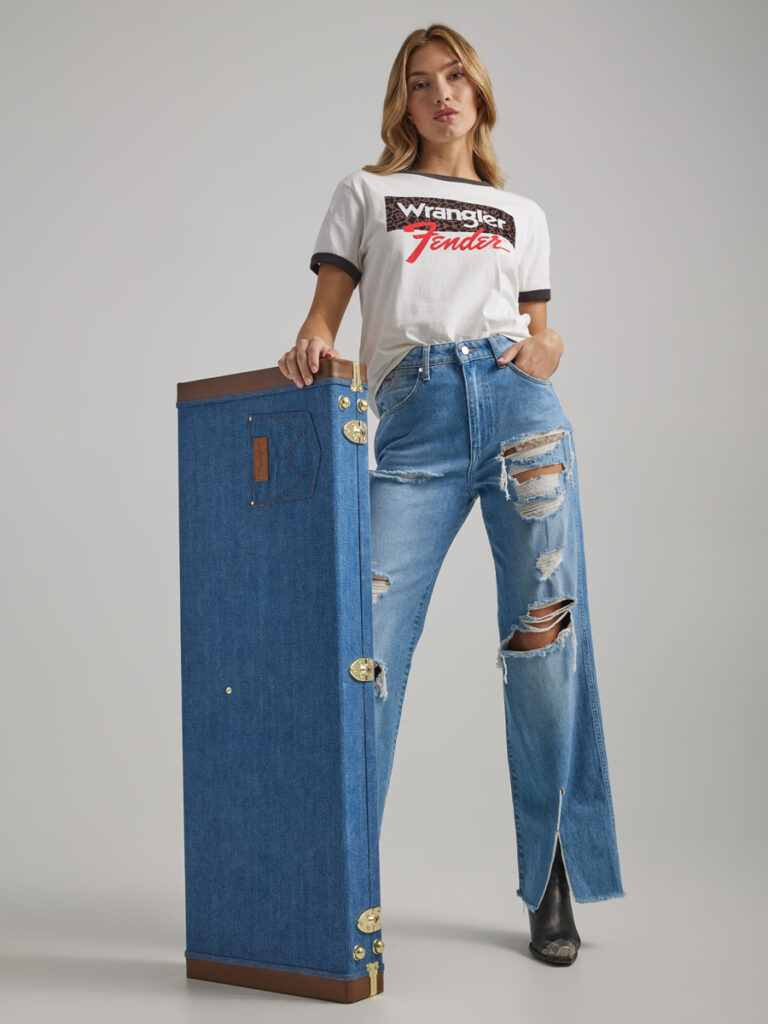But making a guitar case take on the personality of jeans turned out to be harder than making a sandwich.

“It turns out is there’s a lot that goes into a pair of Wrangler denim,” Bussey said. “What we found out was, you can do this authentically—it’s just a lot of work.”
Accessories product manager Jordan Gruver took on the task sourcing every component that normally goes into a pair of jeans and then figure out how to assemble a guitar case from them. Since hard-shell cases are usually made of plastic, it was no small feat to literally stitch one together. Cotton denim—the same used to make pants—underwent the requisite washings until the color fade was right. Then factory technicians stretched it across the case’s body (this one’s plywood, not plastic), adding touches like rivets and leather trim.
“My contribution was to put the butt pocket on,” Bussey added, referring to the signature “W” stitch pocket sitting on the case’s lower right corner.
For Wheeler, it was essential that the denim for the case and straps look and feel like a pair of Wrangler jeans. “We want to make sure the wash is bright and have that sort of buttery soft texture—that classically worn-in look to them,” she said.
All told, the elapsed time between idea and sellable product was two years.
‘Melded merch’
It was time well spent, according to veteran marketing strategist Shama Hyder, CEO of Zen Media.
“Co-branded merch is nothing new, but the guitar case made out of denim is particularly notable because it goes beyond just slapping on a logo,” Hyder said. “It is what I’d call ‘melded merch,” and will become a trend. What makes this particularly effective? It’s authentic. It literally weaves the two brands together into a brand-new product. It also triggers a sense of nostalgia. I also bet this will become a collector’s item.”
Actually, that’s the idea. With a production run limited to 2,500 cases, “we assume that in 10 years we’ll see these on the used market driving a $1,000 price tag,” Bussey said.
If Bussey’s right (and even if he isn’t), there’s a latent benefit for Wrangler here, too. Because unusual products like the case generate buzz, and world-of-mouth marketing is a central component at work.
“The way [we have been] able to merge these two brands to have kind of a showpiece, it just takes it to a next level, which is really cool,” Wheeler said.
Cool enough that guitar players took notice quickly—not just of the accessories, but of the custom Fender Telecaster used in the PR materials.
“What we really want to know,” said Guitar World magazine, “is where we can get that denim-finished Telecaster with the leathery pickguard that appears in the promo photo… How do we wrangle one of those?”

